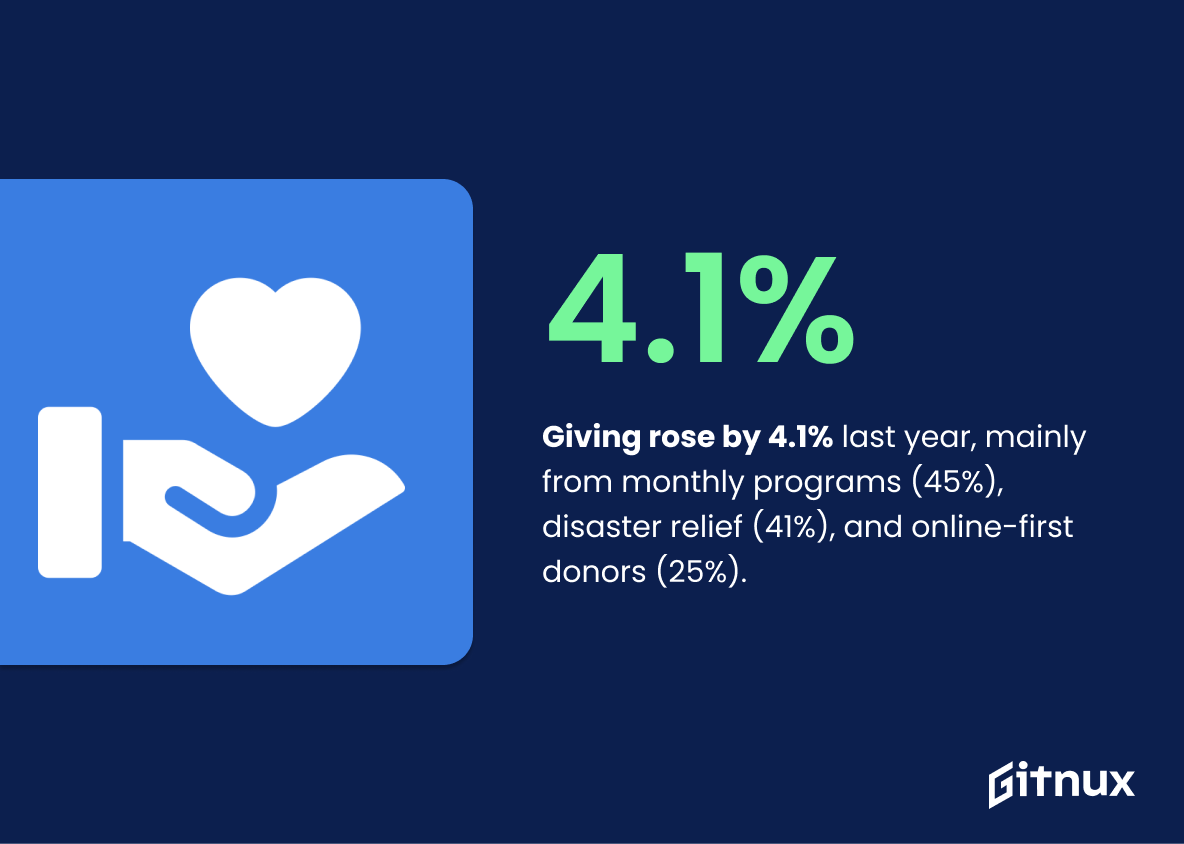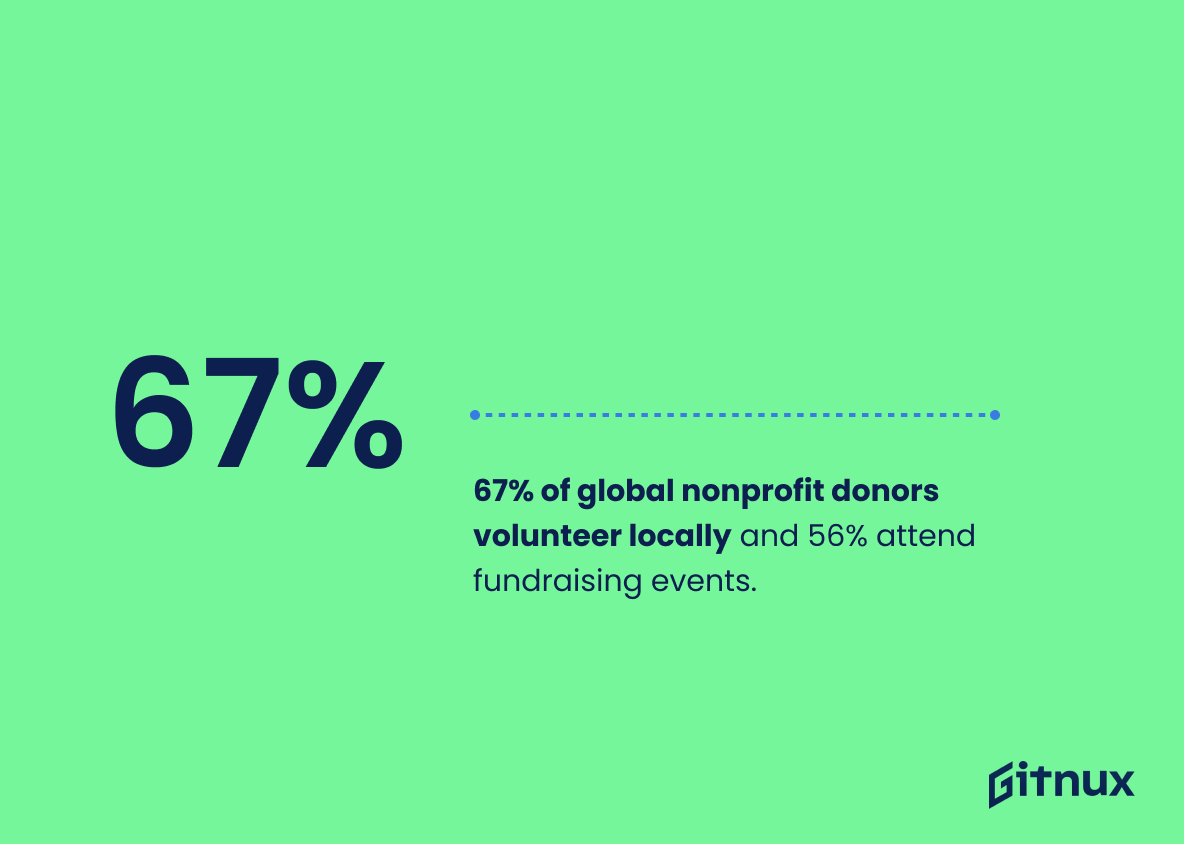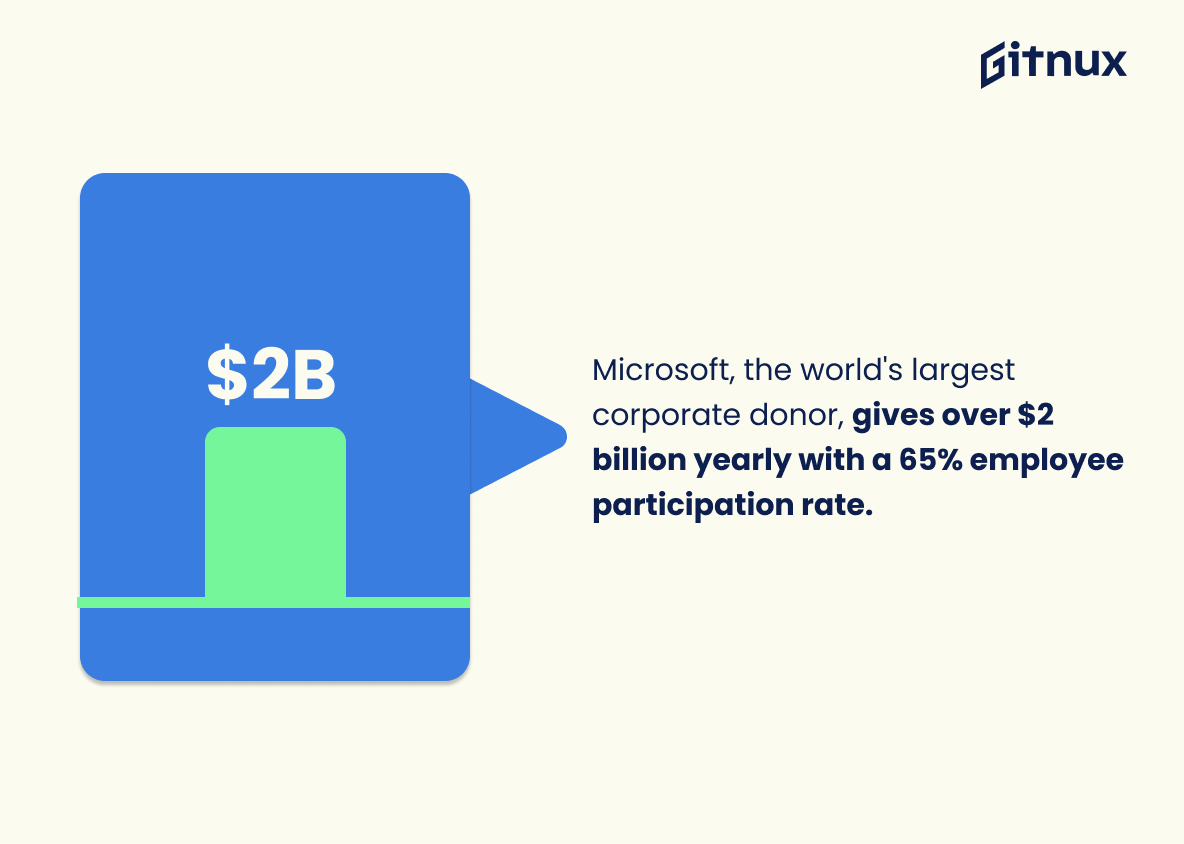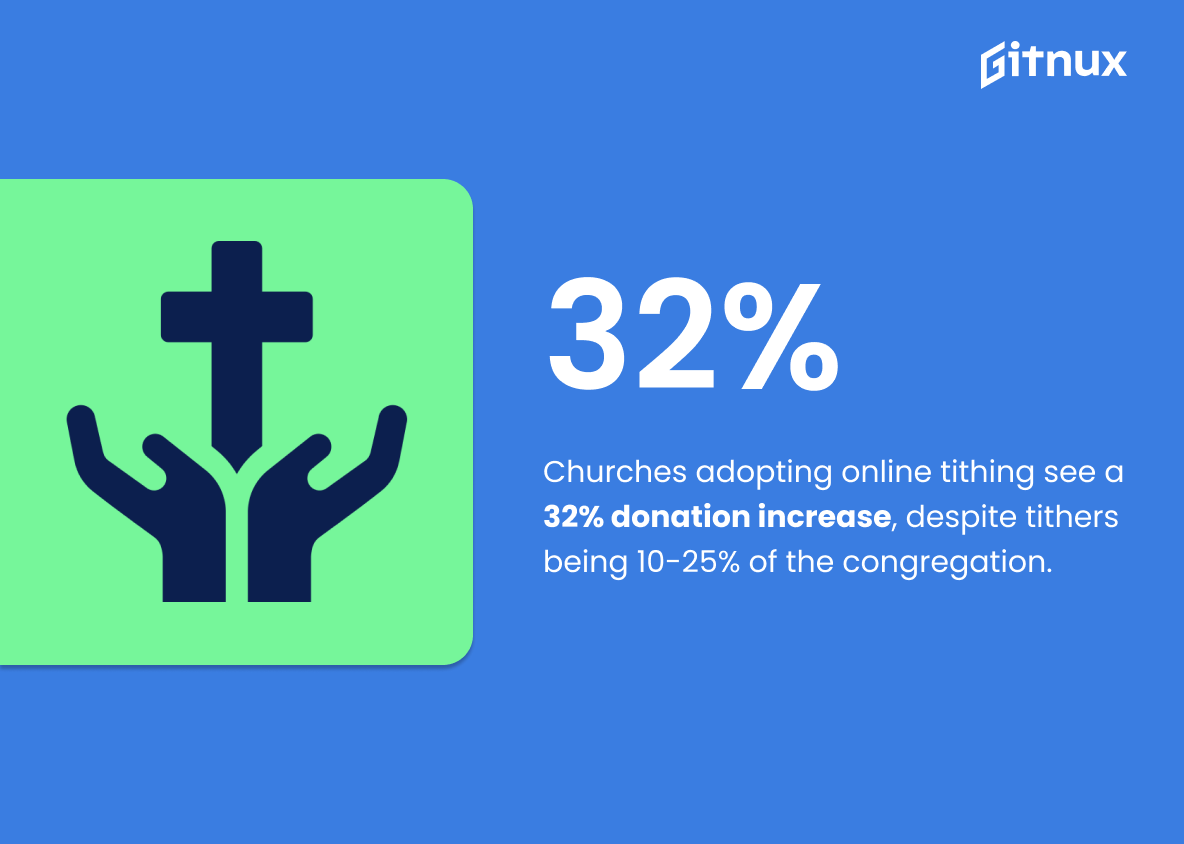Fundraising is a critical part of any nonprofit organization’s success. It’s important to understand the current trends and statistics in order to maximize your fundraising efforts.
In this blog post, we’ll take a look at some of the latest fundraising statistics and how they can help you create a successful fundraising campaign. We’ll also discuss the importance of tracking your fundraising efforts and how to use the data to make informed decisions. So, let’s get started.
Fundraising Statistics: The Most Important Statistics
67% of worldwide non-profit donors volunteer locally and 56% attend fundraising events.
Microsoft is the world’s biggest corporate donor, donating over $2 billion annually to nonprofits with a 65% employee participation rate.
Fundraising: Statistics Overview
Overall giving grew 4.1% over the past year, with 45% of worldwide donors enrolled in a monthly giving program, 41% of worldwide donors giving in response to natural disasters, 31% of offline-only first-time donors retained for over a year, 25% of online-only first-time donors retained for over a year, and 30% of annual giving happening in December with 10% of all annual donations coming in the last three days of the year.
This matters in the context of Fundraising Statistics because it provides insight into donor behaviour, such as how donors give, why they give, when and where. This information can be used to inform fundraising strategies and ensure that donations are maximized.
Additionally, it provides insight into the effectiveness of different fundraising techniques, such as monthly giving programs and natural disaster response donations. This information can be used to refine fundraising strategies and ensure that donations are maximized.
Public charities accounted for the majority of revenue, expenses, and assets of the non-profit sector in 2017, with small organizations making up the majority of public charities. This statistic is important for fundraising because it shows the impact of small organizations on the non-profit sector and the potential for fundraising success.
It also shows that 2017 was a particularly successful year for fundraising, which can be used to encourage donors to give to non-profits. Additionally, it provides insight into the importance of public charities in the non-profit sector, which can be used to inform fundraising strategies.
Online giving grew by 12.1% over the past year, with female donors more likely to give due to social media marketing and male donors more likely to give due to email messages, but donations completed through desktop browsers decreased by 10%.
This statistic matters in the context of Fundraising Statistics because it shows that online giving is trending upwards, and that different methods of marketing can be used to target different genders. It also shows that desktop browsers are becoming less popular for donations, so organizations should focus on other methods of online giving.
For non-profits Mobile usage for giving has increased significantly, but users spend less and are hard to retain when giving on mobile compared to desktop and tablet.
This matters for non-profits because it suggests that there is still room for improvement in terms of mobile functionality, security, and readability in order to increase donations and retain donors.
67% of worldwide non-profit donors volunteer locally and 56% attend fundraising events, demonstrating the importance of engaging donors in the community.
This statistic matters in the context of fundraising statistics because it shows that engaging donors in the community is important for non-profits to be successful. By encouraging donors to volunteer locally and attend fundraising events, non-profits can build relationships with their donors and create a sense of community. This can lead to increased donations and more successful fundraising efforts.
Human services groups make up the majority of public charities, but hospitals account for the majority of revenue and expenses.
This matters in the context of fundraising statistics because it shows that even though human services groups are more numerous, they are not bringing in as much revenue as hospitals. This could mean that fundraising efforts should be focused more on hospitals in order to maximize revenue.
Microsoft is the world’s biggest corporate donor, donating over $2 billion annually to nonprofits with a 65% employee participation rate, but only 19% of companies include more than one paragraph on their matching gift programs in easily accessible employee-facing materials.
This statistic matters in the context of fundraising statistics because it shows the importance of corporate giving and employee engagement in fundraising efforts. It also highlights the need for companies to make their matching gift programs more accessible to their employees in order to maximize their donations.
PACs have raised nearly three times as much money as individual candidates for the current election cycle, with nine individuals contributing at least $20 million.
This matters because it shows the influence of large donors in the election cycle, as they are able to contribute more money to PACs than to individual candidates due to contribution limits. This can give them more influence over the outcome of the election.
Religious institutions/religious media are the largest recipient of charitable funds overall, with 49% of all church giving transactions made with a card, 8/10 people having zero credit debt, and 60% being willing to give digitally. This matters in the context of Fundraising Statistics because churches that accept tithing online increase overall donations by 32%, and tithers make up only 10-25 percent of a normal congregation.
This statistic shows that 84% of congregations had the ability to accept contributions online before or right after the pandemic began, demonstrating their resilience and capacity for creativity in the face of declining membership and attendance.
This is important as it shows that religious organizations have been able to adapt to the changing environment and continue to raise funds despite the challenges posed by the pandemic.
Conclusion
Fundraising is an important part of any organization’s success, and understanding the latest fundraising statistics can help you make the most of your fundraising efforts.
By understanding the trends in fundraising, you can better target your efforts to maximize your success. With the right strategy, you can ensure that your organization is well-positioned to meet its fundraising goals.
References
1 – Nonprofit Fundraising Statistics [Updated for 2023] (doublethedonation.com)
2 – The Nonprofit Sector in Brief 2019 | National Center for Charitable Statistics (urban.org)
3 – Nonprofit Fundraising Statistics [Updated for 2023] (doublethedonation.com)
4 – Nonprofit Fundraising Statistics [Updated for 2023] (doublethedonation.com)
5 – Nonprofit Fundraising Statistics [Updated for 2023] (doublethedonation.com)
6 – The Nonprofit Sector in Brief 2019 | National Center for Charitable Statistics (urban.org)
7 – Nonprofit Fundraising Statistics [Updated for 2023] (doublethedonation.com)
8 – What role do political action committees have in elections? – USAFacts
9 – 2023 Charitable Giving Statistics, Trends & Data: The Ultimate List of Charity Giving Stats | Nonprofits Source
10 – Giving 2021: Pandemic lessons and the future of religious giving – Lilly Family School of Philanthropy (iupui.edu)






